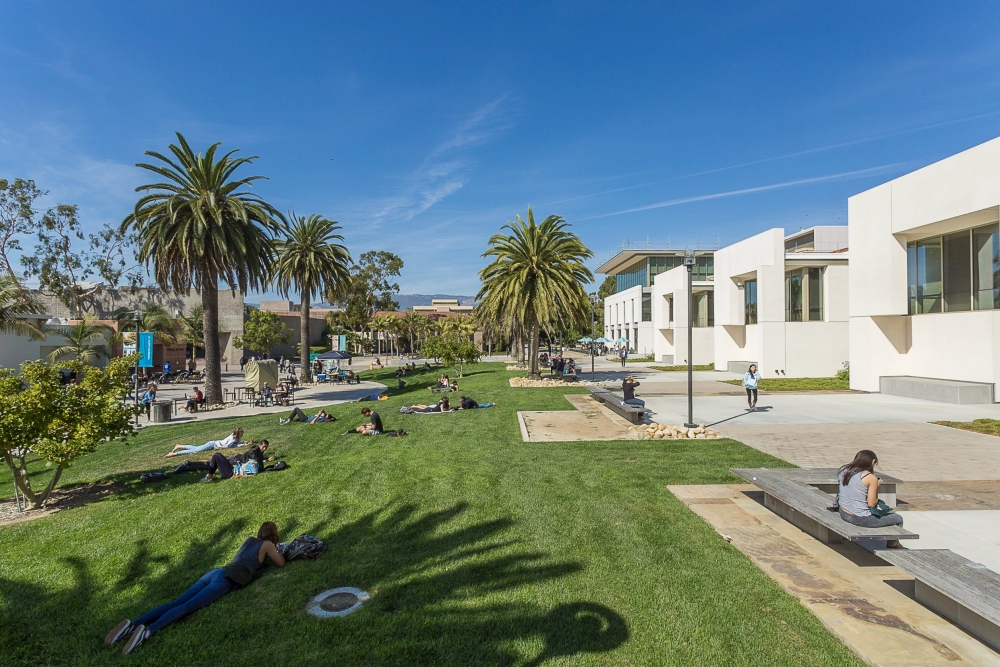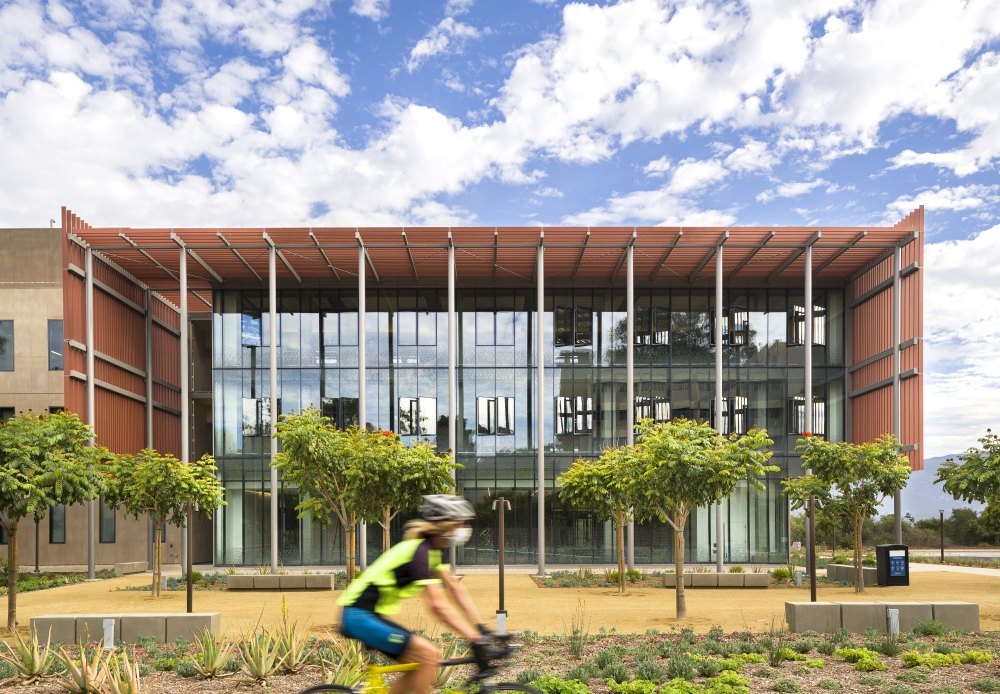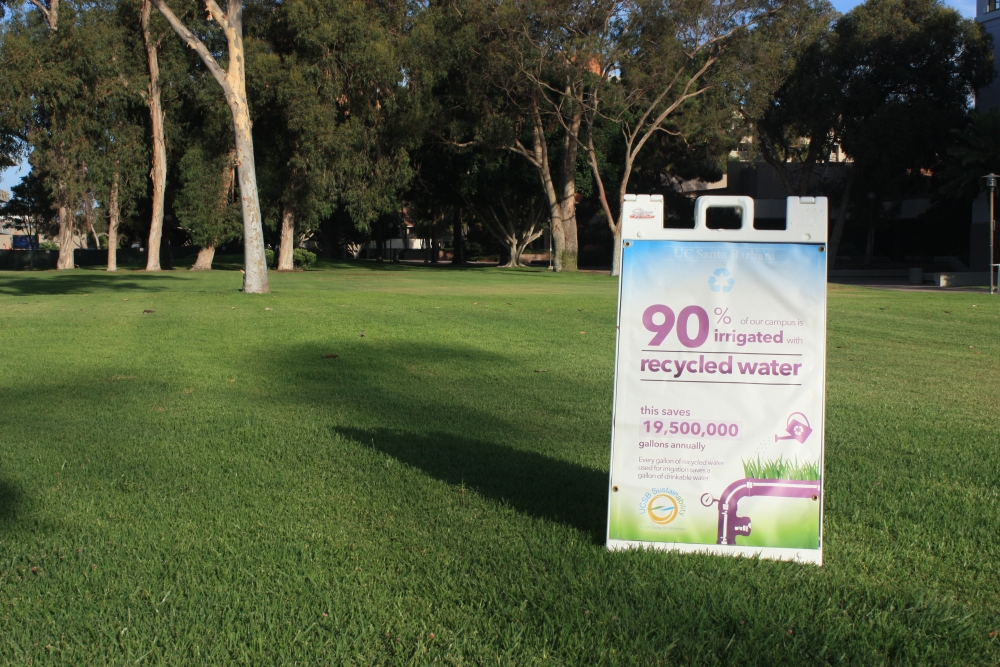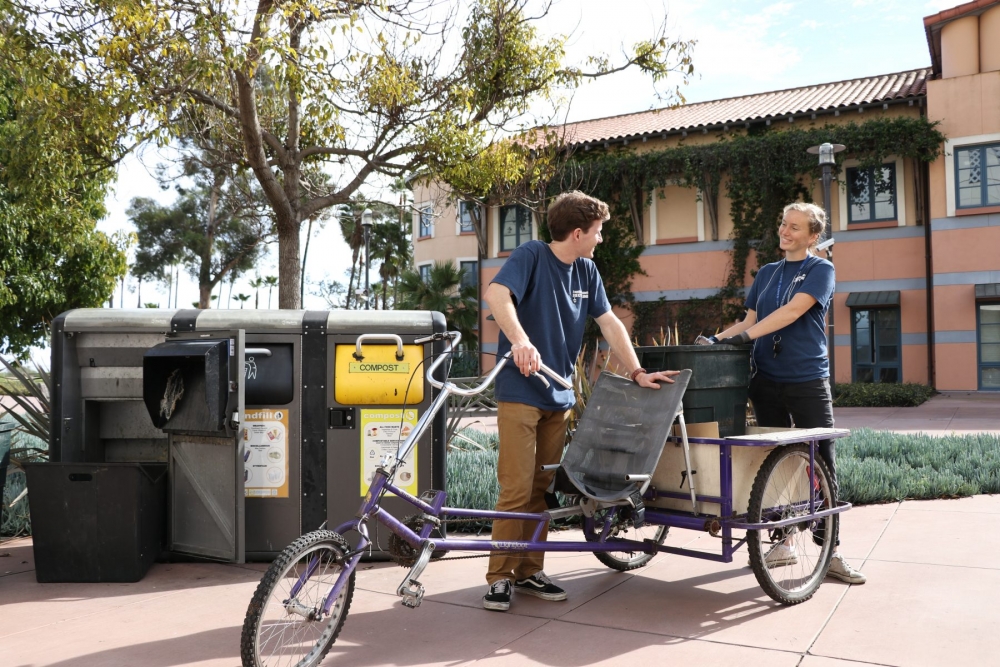
Power, Water and Waste



When Gov. Gavin Newsom called on Californians to reduce power consumption during this summer’s heatwave, UC Santa Barbara answered that call, reducing a tenth of its energy use in a matter of minutes. But responding to extreme grid events is merely a small part of the university’s commitment to sustainability.
Most building systems on campus are networked together, which gives the facilities team centralized control over lighting as well as heating, ventilation and air conditioning (HVAC). “We can group together a lot of small measures across the whole campus, and those add up,” said Jordan Sager, assistant director of energy & engineering services. “We can drop the total electrical load on the campus by about 10% with the push of a button.”
“When the governor comes through and says, ‘We’ve got an emergency. UC, we need you to do your part,’ we say, ‘Okay, we’re going to press the button.’” The protocol slightly reduces lighting and expands temperature settings to reduce power consumption. It’s barely noticeable, Sager said. Facilities initiated this sequence Friday, July 9, and let it run that entire weekend.
In fact, the university has been doing this for many years when so-called “demand response events” occur. In such cases, it’s less expensive to pay certain large users to decrease their energy use than it costs to generate more electricity. Responding to a typical demand response event can yield several thousand dollars for the campus. That’s in addition to the money saved by reducing the amount of electricity purchased during that time.
While the measures work well in response to these events — which generally last no more than six hours — they would be impractical to implement all the time. Most of the savings come from reducing the use of air conditioning, explained David McHale, director of Facilities Management. So the key is to strike a balance between saving energy and maintaining a comfortable indoor environment. Demand response events happen when power use is greatest, typically mid-afternoon on hot summer days. A few hours after they begin, temperatures start cooling off and people begin leaving campus for the day, which also helps mitigate the effect these measures have on campus life.
UC Santa Barbara has been participating in demand response programs for over a decade, and responds to one event like July 9 per year. But the campus runs its power-saving routine five days per month as part of Southern California Edison’s Capacity Bidding Program.
The university is working to expand the number of building systems networked into the central control system as funding allows. The facilities network is also growing, and new buildings like Henley Hall and the upcoming classroom building will be even better integrated.

Efficiency measures like advanced window glazing, a sophisticated HVAC system, and low-flow fixtures were integrated into Henley Hall’s design.
Photo Credit: JEFF LIANG
Great strides have been made to increase baseline efficiency as well. “We’re converting as much of the campus as possible to LED lighting in the next two to three years,” Sager said. “We made a huge dent in that workload during COVID, while staff, faculty and students were mostly off campus.”
UC Santa Barbara also installed six megawatts of solar cell capacity at 12 different sites on campus buildings, parking lots and parking structures between 2017 and 2019. This represents approximately 12% of the university’s annual electrical consumption.
The ten most power-intensive buildings account for around two-thirds of total energy use on campus. All of these buildings house research laboratories, which present an opportunity to develop a targeted solution. Ventilation in a typical room might refresh the air four times per hour. But for safety reasons, many labs have an air exchange of multiple times per hour, which uses a lot of electricity and natural gas. “So, through occupancy sensors or other protocols we can reduce that air exchange while those lab spaces are not occupied,” McHale said. These sensors can also control the lighting, further reducing energy consumption.
Of course, safety is paramount as in-person activities resume on campus. The facilities team has modified protocol so that HVAC systems take in as much outside air as possible while still keeping rooms within a comfortable temperature range. Of course, on warmer days, the AC has to work harder to cool this fresh air than if it were simply recirculating the cool air already in the room. “We’re always looking to balance the effect of bringing in outside air with maintaining a comfortable temperature in the room,” McHale said.
When it’s hot, the team can raise a thermostat’s minimum temperature while keeping the maximum allowed temperature fixed. This regime taxes the HVAC system less because it doesn’t need to drop the temperature as far. As a result, the system can maximize the amount of fresh air it takes in while still keeping the room at a comfortable temperature.
It’s not merely electricity that UC Santa Barbara is mindful of; the university has been at the forefront of water conservation as well. The region experienced a terrible drought in the 1990s. UCSB was near its potable water allotment and made a strong effort to reduce its water consumption.
At the same time, Goleta Water District and Goleta Sanitary District were exploring the use of recycled water. “So UCSB became a very early adopter of recycled water in the area,” said Matthew O'Carroll, the university’s refuse, recycling and water efficiency manager.

Signage across the UCSB campus educates students, staff, faculty and visitors about sustainability efforts led by Facilities Management and maintained by Gaucho Grounds.
Photo Credit: COURTESY UCSB FACILITIES MANAGEMENT
The university has a minimum amount of recycled water it has to use per year, as it is the major user of recycled water in the area. Most of that goes toward campus grounds: 90% of the main campus landscape is irrigated with recycled water. The university is even exploring recycled water for flushing toilets, which has already been incorporated into Bren Hall and Tenaya towers.
UC Santa Barbara has also taken great strides to reduce the amount of water used for its HVAC systems. Cooling towers remove waste heat from HVAC systems, and use potable water to do so. All of the cooling towers on campus employ a recirculating system, which reuses cooling water multiple times before it dumps down the drain. The university is actively monitoring these systems in order to achieve greater efficiency by increasing the cycles of concentration.
“We’re saving millions of gallons of water a year just from our cooling towers,” McHale said. The university is also making steady gains converting laboratory equipment from single-pass to recirculating cooling systems.
The University of California had asked each of its campuses to write a drought response plan by 2013. But UC Santa Barbara met many of the UC’s goals five to 10 years early, so it went a step further and produced a Water Action Plan. “The university has been extremely proactive about water conservation efforts,” O’Carroll said. “And so we haven’t had to produce response plans because we’re not responding to external pressures for us to reduce water.”
As part of its broader sustainability efforts, the university has also set its sights on reducing the amount of waste generated on campus. “However, waste is incredibly complicated,” O’Carroll said. While the university only uses one type of electricity and two types of water (potable and non-potable), waste comes in a staggering variety of different forms. And reducing waste involves purchasing decisions beforehand, rather than just turning off a switch or spigot after the fact.
The university has already begun tamping down the amount of waste that ends up in landfills each year. The campus diverted 62% of its waste away from landfills in 2018-19 through recycling and composting.

The Associated Students plays an important role in campus’s waste management system.
Photo Credit: UC SANTA BARBARA
This number has decreased a bit in recent years, a fact O’Carroll attributes to an increase in waste reduction efforts, specifically those targeting recyclables and food waste. Other factors include stricter international recycling regulations, which has changed the recycling market. “However, unlike recycling, waste reduction isn’t market dependent,” O’Carroll said. “We just have to change consumption behavior on campus.”
Waste audits help to characterize waste. They allow for better understanding of what types of material are being consumed in a building. The facilities team can use this information to develop programs to help reduce waste or divert it from the landfill by working with departments on their procurement habits or increasing the recycling or composting infrastructure of a building.
UC Santa Barbara has committed to reducing waste generation per capita to 75% of 2015-16 levels by 2025, and 50% by 2030. The campus has already stopped using and procuring Styrofoam in food-service entities, and facilities management is engaging with suppliers on product substitution for the lab settings.
Everyone in the UC system is taking their 2020 data with a grain of salt, according to O’Carroll, because with the campuses closed to the majority of the community, significantly less waste was generated. Less organic waste was produced from food service eateries, less material was recycled and, overall, less material was consumed, O’Carroll said.
“Our goal really is trying to achieve these savings without having the campus community feel the impact of them,” O’Carroll said.



